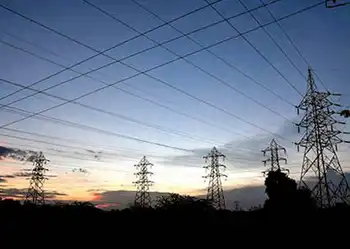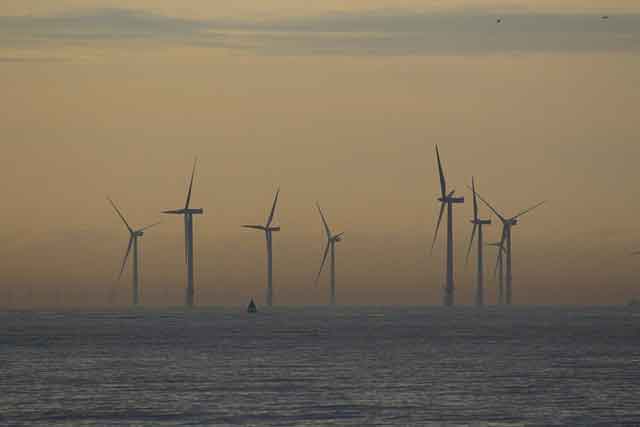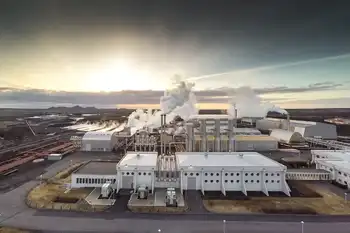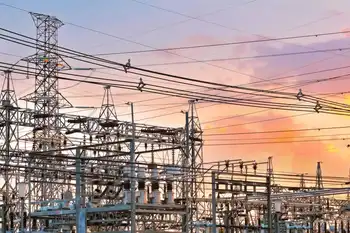Energy storage will play a vital role
A strange sight, certainly, but that's exactly what you'd see as part of an energy-storage pilot project envisioned by a Toronto-based company called Hydrostor, founded just last year by wind entrepreneur Cameron Lewis.
Led by chief executive Curtis VanWalleghem, a senior manager with Deloitte Consulting, Hydrostor has come up with a novel way to store large quantities of energy that can be dispatched later as needed, such as during periods of high electricity demand.
At the heart of the system is a grid of ruggedized inflatable bags – called accumulators – anchored along the lakebed at least 80-meters deep. The accumulators are filled with compressed air during off-peak times, which is when the electricity used to compress the air is least expensive.
When electricity is required during peak times the air, to put it simply, is let out of the balloons. The weight of the water above the accumulators forces out the air at high pressure into a special above-ground turbine called a turboexpander that generates electricity.
"It takes compressed air and turns it back into electricity," says VanWalleghem. "And it's scalable. The more accumulators you install the more storage you get."
He wants the company's first pilot project, potentially funded through an agency such as Sustainable Development Technology Canada, to supply up to two megawatts of power during the course of four hours – enough during that time to supply a few hundred homes.
Energy storage is considered a crucial component of a future smart grid that over time will see more wind, solar and other forms of intermittent renewable energy contributing to the power system. Storage helps to "firm up" renewables, meaning we can store power when the wind blows or sun shines and dispatch it later when we need it, as we do with power plants that burn coal and natural gas.
It can also provide back-up power supply and help ease bottlenecks on the grid. For example, if peak demand for power in Toronto exceeds the capacity of transmission lines to feed power into the city, local storage could help bridge the gap and defer the cost of upgrading the system, or of building a third transmission line into the city.
"I can envision a future where a company like Hydrostor follows Hydro One around and relieves capacity bottlenecks on their system so they can optimize their capital spending program," says VanWalleghem.
This isn't about building a few big energy storage facilities it's about having hundreds of facilities of different sizes dotting the province and bringing stability to the grid where required.
Maybe one will "firm up" the output of a wind farm. Maybe another will provide backup power for an office building. Another could support the charging of electric cars on a congested area of an electric distribution system.
"The idea is to pick the most strategic spots," VanWalleghem says.
We do have some energy storage in Ontario, namely the Sir Adam Beck Pumped Storage Generating Station in Niagara Falls, which has a capacity of 174 megawatts. This facility holds water in a 300-hectare reservoir that's held back by a dam. It's a great resource to have, but we're going to need a lot more of it over the coming years.
The problem is that traditional pumped storage is limited by geography. There are only so many 300-hectare reservoirs at a high enough elevation to be useful. What Hydrostor is trying to do is bring more options to the table. After all, about half the world's population, and therefore electricity consumption, is concentrated around large bodies of water.
Other concepts are out there. I've written about Toronto-based Riverbank Power, which wants to excavate large underground caverns near bodies of water and turn them into pumped-storage facilities. There is also traditional compressed-air storage, which involves pumping air into salt caverns and then releasing it later to generate power – but again, this is dependent on geography and geology.
Flywheels, megawatt-sized flow batteries, banks of lithium-ion batteries, ultracapacitors, and a few strangely designed gravity-based systems are among some of the other technologies expected to play a role on the grid in the coming years.
As demand for energy storage grows and as the cost of these technologies fall, the idea of selling energy storage as a service on the grid will begin to catch on and third-party storage providers will emerge to offer a suite of services to utilities that don't want to invest in their own storage assets.
Unfortunately, Ontario hasn't done much to encourage the arrival of such technologies or business concepts. "There is no policy or programming developed around energy storage in Ontario," says Lynda O'Malley, projects analyst at the Centennial Energy Institute.
O'Malley is part a newly formed group called the Ontario Storage Leadership Group that is trying to champion the cause. The group plans to come out with a position paper in April that will recommend what policy and regulatory changes will be needed to kick-start more experimentation and eventually commercial deployment of energy-storage technologies in the province.
Coal will be phased out in 2014. After that, natural gas will be the target. Energy storage, at some point, could play an important role if we let it.
Related News

India's electricity demand falls at the fastest pace in at least 12 years
DELHI - India's power demand fell at the fastest pace in at least 12 years in October, signalling a continued decline in the industrial output, according to government data. Electricity has about 8% weighting in the country's index for industrial production.
India needs electricity to fuel its expanding economy but a third decline in power consumption in as many months points to tapering industrial activity in a nation that aims to become a $5 trillion economy by 2024.
India's industrial output fell at the fastest pace in over six years in September, adding to a series of weak indicators that suggests that…





